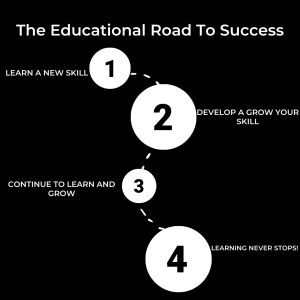Performance-Based Learning: How it Works
The term “Performance-Based Learning” is thrown around a lot these days, but what does it mean? Does it have to do with working more hours? Does it have to do with preparing for an exam? Does it have to do with writing a grant proposal? Does it mean you should have a meeting every day?
The term “Performance-Based Learning” can be used in many ways. In this context, performance-based learning (PBL) is a practical, educational approach that helps you learn and understand by doing. It is a method of learning that requires students to use their creative qualities by thinking about an issue and then finding a way to solve it.
Performance-based learning approaches reflect the idea that we learn better when we actively engage in the process — when we actively practice, play, or experiment with what we want to learn. It is a term that has been coined to describe how a student chooses how to learn something, not how much they are officially studying for a specific test. The core principles of PBL are to engage students in meaningful tasks and experiences and provide them with the feedback they need to improve.
In most schools, you’re taught the facts and then tested on them, right? Well, the real world doesn’t work like that. You can’t sit in a classroom or a classroom simulator and learn all the “facts” you need to know about a job or a topic before taking a test. To succeed in the workplace, you need to first become aware of the skills and behaviors you need to do your job and perform well. That’s why learning based on performance is so important.
How Does It Work?
Performance-based learning is not new, but it’s starting to make its way into the classroom. Many schools have embraced the idea that an engaging curriculum can motivate students, particularly those who are less motivated and give them a greater opportunity to improve their skills.
Many institutions make a push to improve student performance by giving students a practice test each time they take a class. These practice tests are usually short, semi-formulaic, multiple-choice exams. However, performance-based learning uses multiple-choice exams but then adds a new twist: the questions are designed to require students to demonstrate how they know the answers to the test questions.
For example, a question might ask students to describe how they would go about solving a math problem. To score the students’ answers, the test makers might use a multiple-choice exam, but the question might be phrased in a way that forces students to demonstrate how they would go about solving the problem.
The test scores are used to determine students’ levels of mastery, and then students are required to follow a prescribed curriculum in order to improve their performance and move on to the next level.
Performance-based learning involves breaking down the skills you’ll need for a job into small chunks and then practicing these chunks in a variety of different ways as you study. The idea is that if you practice the skill in all sorts of different ways, you’ll be more prepared for the real-life situations you’ll see in the workplace.
How To Implement Performance-Based Learning
Using performance-based learning to improve classroom learning is not new. But in recent years, research on the subject has been gaining steam, and many schools and organizations have incorporated performance-based learning into their curricula. These school activities are designed to focus on the learning or competencies that students will need to demonstrate in the workplace—often in an attempt to bolster retention of course material.
The goal is to move students from passive to active learners, create a more dynamic classroom environment, help students improve their skills, and make them more accountable.
There are two ways to implement performance-based activities. One is to focus on the performance, but the other is to focus on the development of the performance. The success of any performance-based program hinges on the performance of the individual participants in the program. In some cases, it is measured and then used to implement the performance-based program.


